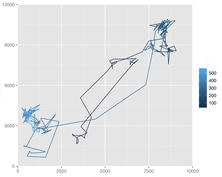Publication trimestrielle du Laboratoire
d'analyse et d'architecture des systèmes du CNRS
The introduction of robots in our daily lives raises a key issue that is ``added'' to the ``standard challenge'' of autonomous robots: the presence of humans in the environment and the necessity to interact with them. In the factory, the robot is physically separated and a security distance is always kept from human workers. With this separation, the primary concern in such environments, the ``safety", is ensured. However this separation cannot be applied to future applications where the robot will be in a situation where it will have to assist humans.Yet the biggest difference in these two applications do not come from the definition of their primary concern, the safety, but comes from a secondary concern. In factory, when the safety is ensured, the feasibility of the task becomes the most important concern. The robot's environment is perfectly structured and all the robots are perfectly coordinated in order to accomplish their tasks. On the contrary, the feasibility of the task leaves its place to the "comfort" for an interactive robot. For a robot that physically interacts with humans, accomplishing a task with the expense of human comfort (or ``psychological safety") is not acceptable even the robot does not physically harm any person.So, a robot that will serve as a helper among humans should not only be a machine but it should respect social rules and protocols ensuring Safe, Socially Acceptable and Reliable motion.The robot has to perform motion and manipulation actions and should be able to determine where a given task should be achieved, how to place itself relatively to a human, how to approach him/her, how to hand the object and how to move in a relatively constrained environment in the presence of humans.In this work, we propose solution methods to these questions with a navigation and a manipulation planner:- We present a Human-Aware Navigation Planner that takes into account the safety, the fields of view, the preferences and states of all the humans as well as the environment and generates paths that are not only collision free but also comfortable.- We present a Human-Aware Manipulation Planner that breaks the commonly used human-centric approaches and allows the robot to decide and take initiative about the way of an object transfer takes place. Human's safety, field of view, state, preferences as well as its kinematics structure is taken into account to generate safe and most importantly comfortable and legible motions that make robot's intention clear to its human partner.





